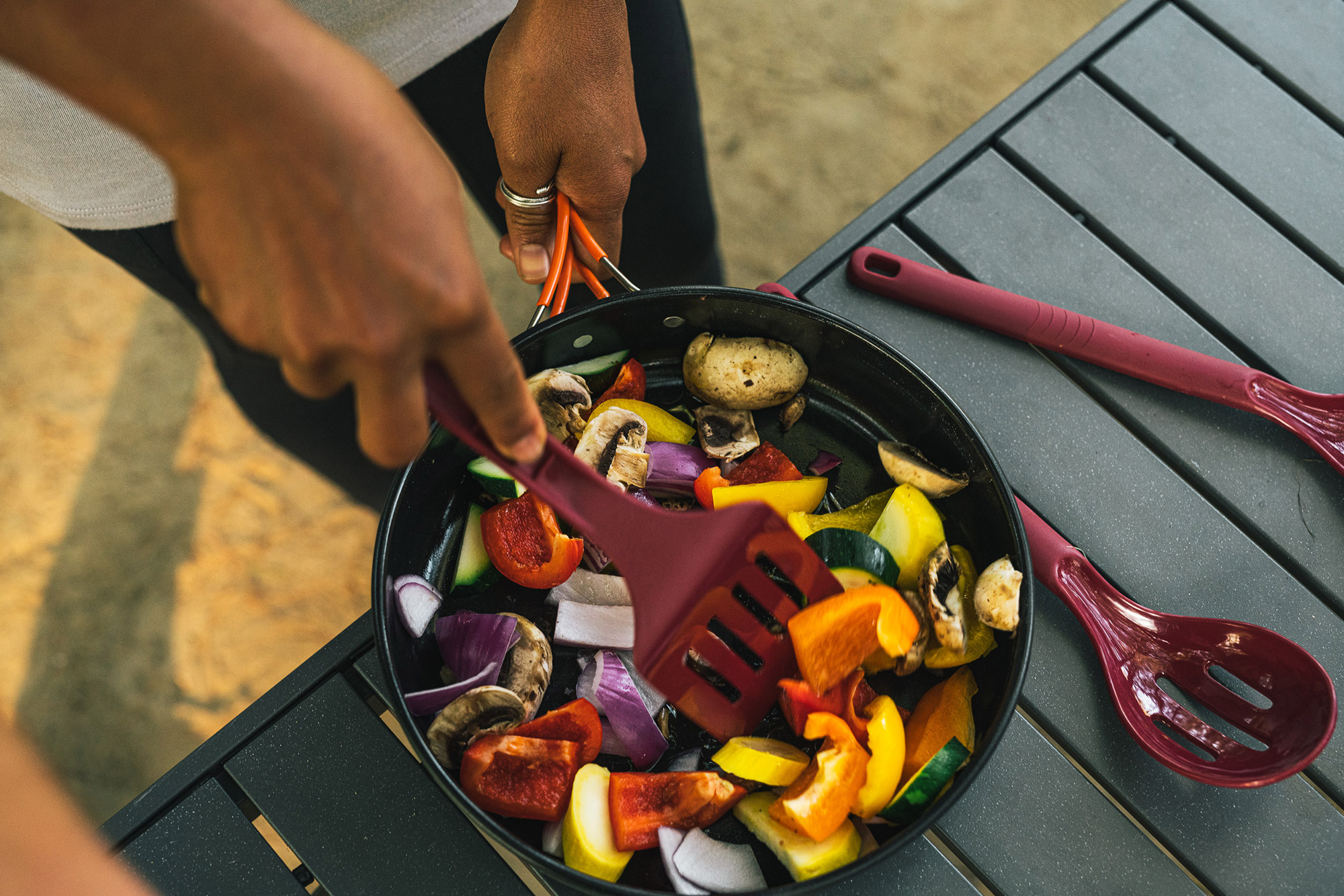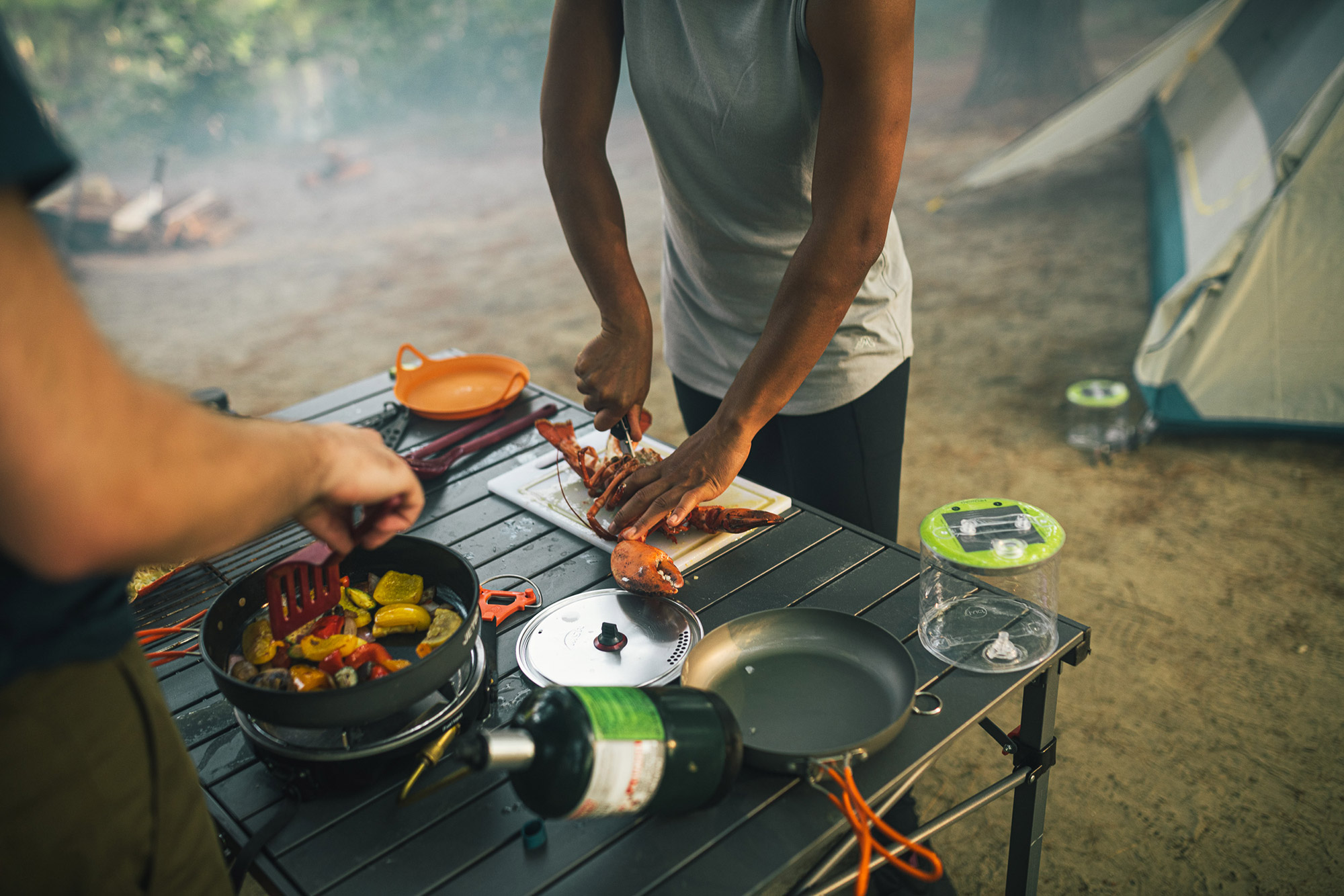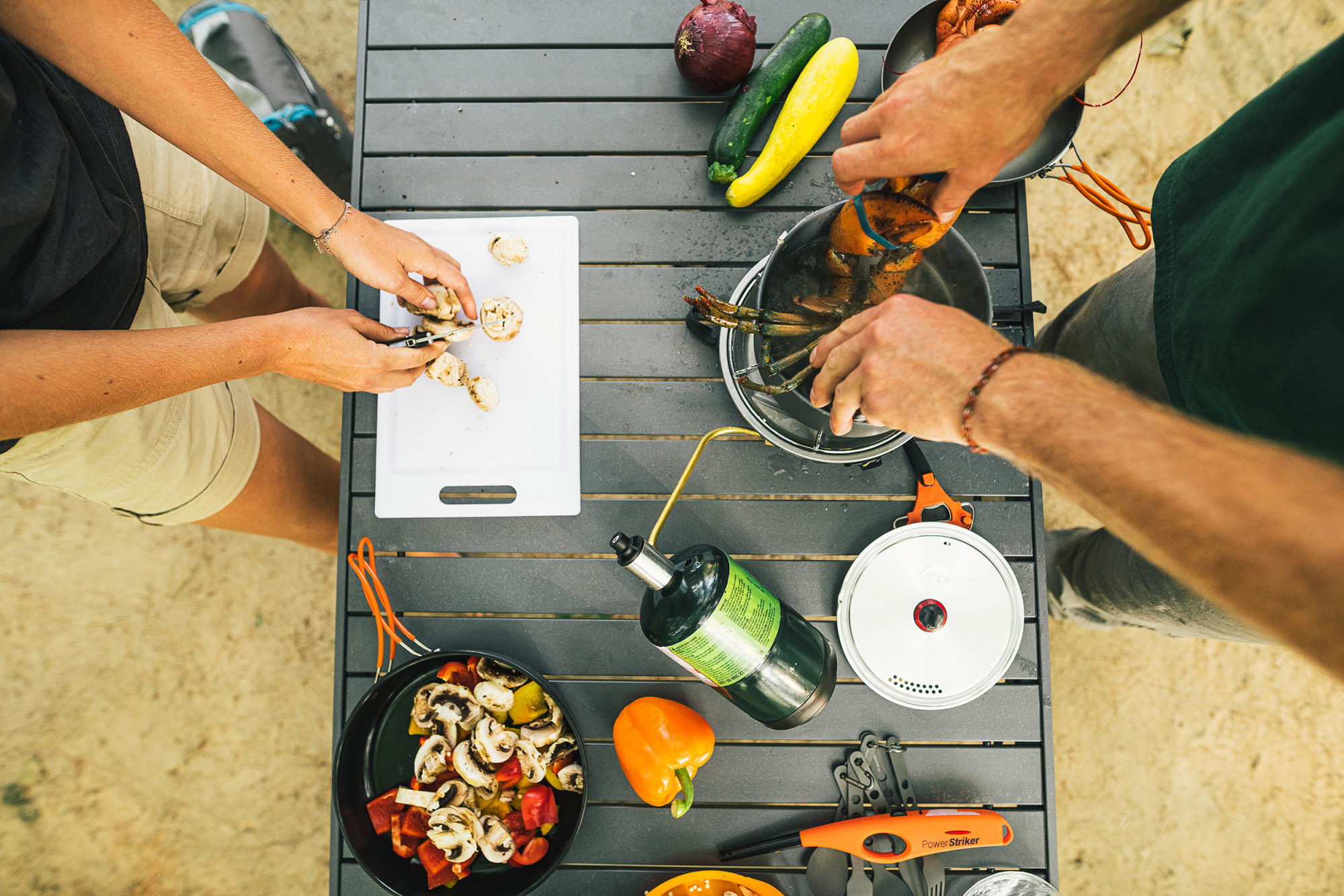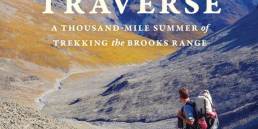The benefits of adventuring in the outdoors are too numerous to count, but one excellent reason for getting outside is burning calories, or, should we say replacing them. While it’s awesome to end an all-day epic hiking Mount Mansfield with a burger from Doc Ponds or toast a day climbing the Northeast Ridge of the Pinnacle with a pint from the MOAT, a lot of the time all you want to do is simply retreat to camp and relax. For those who prefer going back to the campground and avoiding the town, here’s what you need to create those all-so-important—and tasty—meals without leaving the comforts of camp.

Plan and Prep Ahead of Time
Before getting into the gear and goodies of a great car camping kitchen, it’s important to stress the benefits of getting as much meal planning and prep as possible done at home. Knowing what you’re going to eat and doing food preparation in advance, such as slicing vegetables, cutting meats, and pre-cooking some items, is an easy way to streamline the process. Once everything is prepped, pack it into see-through Tupperware. This minimizes the tasks you’ll need to do at camp, reduces the amount of stuff you have to bring, and, most importantly, speeds up cook time, which is key after something like a long day on Cadillac Mountain’s South Ridge Trail.
Plastic Bins for Organization
The key to any camp kitchen is being able to find what you need when you need it. To keep things simple, we prefer to divide our gear between two rugged bins with secure tops. One bin is used to store non-food items like pots, pans, cutlery, and paper towels; the other bin is used for any food that doesn’t need to be kept cold along with other necessities such as cooking oil and spices.
Pro Tip: Choose a bin long enough to hold your stove lengthwise. For example, you’ll want a bin about 20 inches long if you’re cooking on the super-popular Eureka Spire Stove.
Hard-Shell Cooler
A cooler is key to creating a restaurant-quality meal at camp, not to mention keeping celebratory craft beers cold. Sure, you can get away with a cheap cooler—but a high-end cooler like the YETI Tundra 45 Hard Cooler is capable of keeping food and beverages cold for a long weekend away, and in some cases even longer. Take your cooler game to the next level with YETI ICE (available in 1 lb., 2 lb., and 4 lb.) and say goodbye to messy old-fashioned ice bags.
Pro tip: Because opening a cooler too often drastically reduces its effectiveness, consider bringing a second soft-sided cooler like the Mountainsmith Cooloir 24 Soft Cooler if you’re planning on frequenting the cooler for beverages of the hoppy variety.

Two Burners are Better than One
A two-burner stove has been a staple of car camping kitchens for decades and continues today. Relatively lightweight and packable, a high-quality two-burner like the Eureka Spire LX Camp Stove that’s capable of running off of disposable Coleman Propane Canisters as well as larger propane tanks offers great versatility and provides plenty of range space for making two dishes simultaneously—for example, bacon and eggs or spaghetti and meat sauce. When it comes time to go, the Eureka Spire LX Camp Stove folds up for easy transportation.
Canister Stove
If you’re a coffee or tea lover, consider bringing a canister stove in addition to your two-burner stove. The Jetboil Flash is capable of boiling 16 oz. of water in a stunningly fast 100 seconds, enabling a quick caffeine hit and freeing up a burner on the “big stove” for food—a valuable commodity, especially when you’re cooking for a large group.
Cast Iron Skillet
Cast iron is heavy and cumbersome, but it’s also easy to clean and wears like…well, iron. Cast iron skillets last forever if properly cared for, which is music to the ears of everyone from environmentalists to those who just like to buy things once. Another versatile kitchen piece, you can cook with a cast iron skillet on your stove or use it over an open flame for “real” campfire cooking. A large ten-inch cast iron skillet paired with a smaller eight-inch skillet is ideal for preparing two-dish meals.

Pots
A pot is the perfect complement to the cast iron skillets, as it’s better suited for jobs such as cooking pasta and rice, or simply boiling water for instant mashed potatoes. The MSR Ceramic 2-Pot Set nests within itself so it takes up minimum space and features a lid with an integrated strainer for maximum versatility. Thanks to their lightweight construction, these pots can do double duty and be hiked in on your next overnight on the Pemi Loop.
Water Storage
Sometimes you’re lucky and there’s a water spigot at your campsite, other times getting running water requires a short hike. A collapsible water storage bag like the 6L MSR DromLite Bag eliminates the need to go back and forth to get water for everything from cooking to drinking to cleaning.
Dishware and Cutlery
There are all sorts of clever dishware and cutlery—the Sea to Summit X-Seal and Go Collapsible Container and Kung Foon come immediately to mind—available for enjoying the delicacies created in your camp kitchen, but sometimes the simplest solution is the best. The GSI 1-Person Camp Dish Set comes with a lexan plate, bowl, and mug, along with a plastic fork, knife, and spoon set—essentially everything you need for eating at the campsite.
Pro Tip: Get a dedicated can opener and keep it with your camp cutlery. There is nothing more disheartening than getting ready to make burritos only to discover that you can’t open the can of beans.
Chef’s Tools
While just one spoon and a spatula will usually do, the GSI 3-Piece Ring Set delivers two spoons and a spatula. Combine it with a sharp knife and you’ll have everything you need for crafting killer camp cuisine.
Pro Tip: Add a GSI Compact Scraper or MSR Alpine Dish Brush/Scraper, based on the pots and pans you have, to your camp kitchen. It’s awesome for getting every last bit of food out of the pan and onto your plate, and it helps make cleaning up easy and each scraper is designed specifically to get into all the corners and crannies of the respective brand’s pots and pans.

French Press
If your adventures are fueled as much by caffeine as stoke, a French press is a necessity. The GSI Glacier Stainless Commuter Javapress Mug combines a French press into a travel mug for an all-in-one way to get a caffeine high along with your mountain high.
Camp Sink
Washing dishes is a hassle at home, much less while camping. If you know the area you’re heading to doesn’t have a communal dish sink, a portable camp sink like the Sea to Summit The Kitchen Sink, 20L, helps make the job a little easier. It’s also worth noting that it helps get your dishes cleaner. Complement your sink with a biodegradable soap such as Sea to Summit Wilderness Wash and sponge for cleaning, along with a small pack towel (which can double as a pot holder in a pinch) for dish drying.
Are you a master of campsite culinary arts? Do you have a tip or key piece of gear for creating the ultimate car camping kitchen? Any favorite recipes? We want to hear it all—tell us in the comments below!
Tim Peck and Doug Martland
Tim and Doug met long ago at the Eastern Mountain Sports in Canton, Massachusetts. Bonding over a love of slick Quincy Quarry granite, White Mountain sufferfests, and scheming up adventures while folding tee-shirts, today Tim and Doug collaborate to write about their favorite outdoor activities and occasionally get nostalgic about tee-shirt tables.
Related Posts
April 5, 2024
Book Review: Arctic Traverse: A Thousand-Mile Summer of Trekking the Brooks Range by Michael Engelhard
Take a trip to the world’s northernmost…




